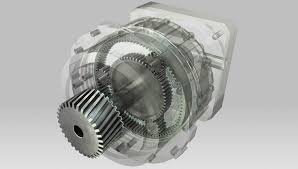Mobile:+86-311-808-126-83
Email:info@ydcastings.com
Aluminium High Pressure Die Casting Techniques for Enhanced Performance and Durability
The Advancements and Applications of Aluminium HPDC Casting
Aluminium High Pressure Die Casting (HPDC) is a process that has gained significant traction in various industries due to its efficiency, cost-effectiveness, and the mechanical properties of the final products. This method involves injecting molten aluminium into a mold at high pressure, allowing for the production of complex geometries with tight tolerances. As the demand for lightweight and durable materials continues to rise, the importance of HPDC in the aluminium industry cannot be overstated.
Key Benefits of Aluminium HPDC Casting
One of the primary advantages of aluminium HPDC casting is its ability to produce high-quality parts with exceptional surface finishes. The rapid cooling of the molten metal against the mold allows for quick solidification, resulting in parts that are not only dimensionally accurate but also exhibit a fine surface texture. This is particularly important in industries where aesthetics and precision are paramount, such as automotive and aerospace.
Moreover, aluminium castings are lighter than those made from other metals, contributing to energy efficiency in various applications. The automotive industry, for example, has increasingly adopted aluminium components to reduce vehicle weight and enhance fuel efficiency. Lightweight vehicles can improve performance without sacrificing safety or strength, making aluminium HPDC a favored choice among manufacturers.
Cost-Effectiveness and Production Efficiency
Aluminium HPDC casting is also known for its cost-effectiveness. The speed of cycle times in high-pressure die casting can significantly reduce manufacturing costs. Once the casting dies are created, they can produce thousands of parts with minimal additional expense. This process minimizes waste material and maximizes efficiency, thereby lowering overall production costs.
Additionally, HPDC allows for the integration of multiple features into a single part, which can eliminate the need for secondary machining operations. This not only saves time but also reduces the risk of error and variability associated with multi-part assemblies. As a result, manufacturers can streamline their processes and deliver products more quickly to market.
Applications Across Industries
aluminium hpdc casting

The applications of aluminium HPDC casting are vast and varied. In the automotive sector, components such as engine blocks, transmission housings, and structural parts are commonly produced using this method. These parts are vital for enhancing vehicle performance and reducing weight.
Beyond automotive, the aerospace industry benefits from aluminium HPDC casting for producing components that require high strength-to-weight ratios, such as brackets, housings, and fixtures. The ability to produce intricate designs with minimal machining is particularly advantageous in aerospace applications, where precision and reliability are crucial.
Electronics is another field where aluminium HPDC casting is gaining popularity. Heat sinks for electronic devices, enclosures, and structural components can all be effectively produced using this method. The excellent thermal conductivity of aluminium enhances the performance of electronic components, making HPDC-cast parts an ideal choice.
Future Trends
Looking ahead, the future of aluminium HPDC casting appears promising, with ongoing advancements in technology and materials. Innovations such as improved alloys and enhanced die designs are continually optimizing the process, enabling manufacturers to produce even more intricate components while maintaining or lowering production costs.
Sustainability is also becoming a focal point in the casting industry. As environmental regulations tighten, the push for greener manufacturing processes has led to increased interest in recycling aluminium. HPDC allows for significant recycling potential, making it an environmentally friendly option in the long-term perspective of the manufacturing sector.
Conclusion
Aluminium HPDC casting stands at the forefront of modern manufacturing, empowered by its versatility, efficiency, and economic benefits. With applications spanning numerous industries and the promise of future advancements, it is clear that HPDC will continue to play a vital role in the evolution of casting technologies. As industries increasingly prioritize lightweight, durable, and technologically advanced materials, aluminium HPDC casting is set to remain a key player in meeting these demands.
-
Understanding Metal Casting TechniquesNewsApr.02,2025
-
Understanding Exhaust Manifolds for Enhanced Engine PerformanceNewsApr.02,2025
-
The World of Metal FabricationNewsApr.02,2025
-
Key Components for Pump and Turbo EfficiencyNewsApr.02,2025
-
Essential Tools for Automotive Maintenance and RepairNewsApr.02,2025
-
Durable Valve Components for Effective Water ManagementNewsApr.02,2025











